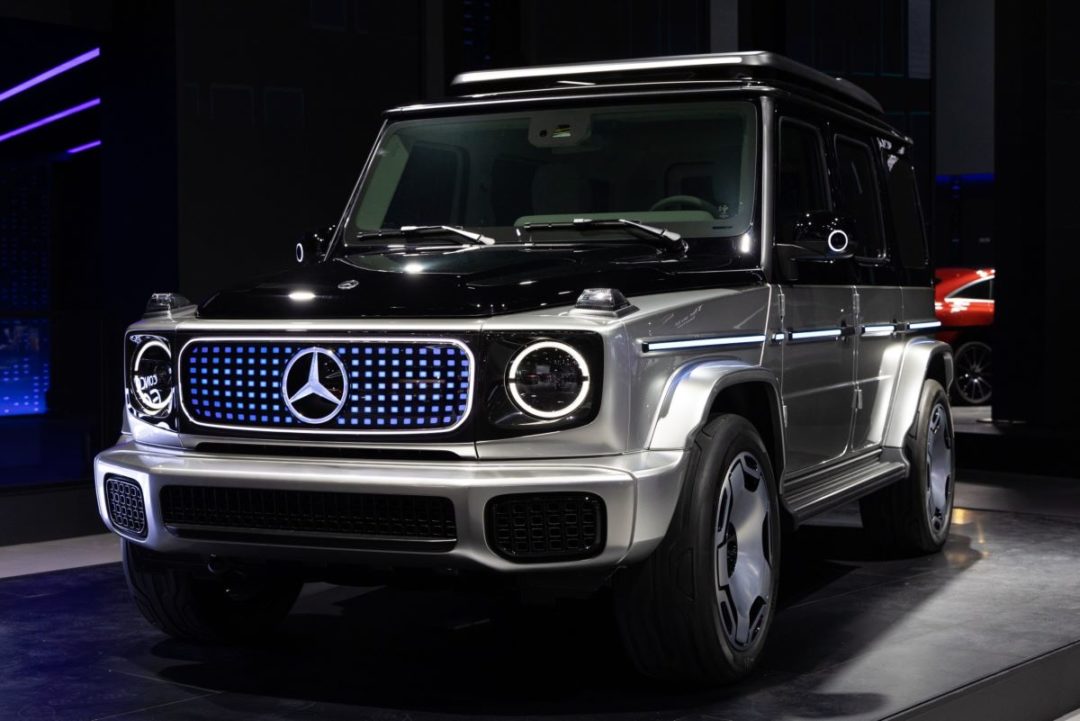
Visit Our Sponsors |
|
|
|
|
|
|
|
|
|
|
|
|
|
|
|
|
|
|
|
|
|
|
|
|
|
|
|
|
|
|
|
|
|
|
|
|
|
|
|
|
|
|
|
|
|
|
|
|
|
|
|
|
|
|
|
|
|
|
|
|
|
|
|
|
|
|

An electric prototype of Mercedes EQG on display during the 2021 Seoul Mobility Show in Goyang, South Korea. Photographer: SeongJoon Cho/Bloomberg
After 12 years of development, a new category of range-boosting battery technology is moving into mass production for electric vehicles.
Sila Inc., a Silicon Valley-based battery materials company with more than $930 million in funding, says it has finalized a mass manufacturing process for the first silicon-based anodes. The company is calling its new material “Titan Silicon,” chief executive officer Gene Berdichevsky said in an interview, and it’s in the later stages of qualification with auto manufacturers before a new factory begins production late next year.
Sila says Titan anodes will immediately boost maximum vehicle ranges by 20%. Its first customer is Mercedes, which will use Titan anodes in its long-range EQG SUV, the electric version of the automaker’s boxy G-Class, starting in early 2025. Berdichevsky says that Sila will be able to make enough material for up to 200,000 electric vehicles a year by 2026 — and enough for a million vehicles a year by 2028.
“We are ready to take on more automakers now,” Berdichevsky said. “There are three things that customers care about, and it’s range, range, and range. We’re here, and we’re ready for it.”
Sila isn’t the only company in the race for silicon-anode bragging rights. Tesla Inc., whose long-range vehicles account for half of U.S. EV sales, has been talking publicly about developing its own silicon anode since at least 2020. In Seattle, Group14 Technologies has secured $650 million and a supply agreement with Porsche, while OneD Battery Sciences based in Palo Alto, California, is working with General Motors. It’s not clear who will be first to scale up the technology.
A new chemistry
Since lithium-ion batteries were invented in the 1980s, anodes have been made of graphite, which is extracted or processed almost entirely in China.
The battery anode serves as a reservoir for lithium ions. When the battery is charged, the ions fill the spaces between layers of graphite. When the battery is discharged, the ions flow out toward the other side of the battery, called the cathode. Most recent advances in battery chemistry have been achieved on the cathode side.
Graphite works well as an anode material, but it comes with extra weight and volume that serve no purpose. Some automakers, including Tesla, have already been sprinkling in small amounts of lightweight silicon, which helps an otherwise identical battery charge faster and store more energy. But the problem with silicon — and it's a big one — is that it expands three times in size as the battery fills up with lithium ions. Even at low concentrations of silicon, the swelling can quickly degrade the battery. High-end batteries today use roughly 5% silicon in the mix.
The trick to making batteries with more silicon content is figuring out how to prevent expansion by encapsulating the silicon particles in some kind of binding structure. Sila’s solution is a Swiss cheese-like scaffolding that surrounds the silicon particle and allows it to expand into the pores of the structure without damaging the outer shell.
Sila’s tiny capsules limit expansion to just 6%, according to the company, which is similar to graphite. After 1,100 charge cycles — equivalent to more than 300,000 miles of driving — the battery retains 80% of its starting capacity. That’s also on par with graphite batteries.
For the first few years of accelerating production, Titan will be sold at a premium, to be used in high-end long-range vehicles. Once silicon-based anodes reach full production, Berdichevsky says they will cost significantly less to make than graphite and he expects them to quickly become the industry norm.
70,000 variations
Sila, founded in 2011, tried more than 70,000 variations of its formula before landing on Titan, which Berdichevsky says can be used for 100% silicon anodes and some of the most energy-dense batteries ever made. Automaker customers can choose the amount of silicon to use in their batteries depending on their targets for range and cost.
Berdichevsky wouldn’t specify the silicon concentrations Mercedes has been using in test vehicles for its upcoming EQG, but the carmaker said last year that the SUV will have an energy density of 800 watt-hours per liter of battery. That would provide almost twice as much driving range that the same sized batteries were getting in 2020, according to the most recent data from the U.S. Energy Information Administration.
The industry is moving quickly. Sila and Group14 were each awarded $100 million in October 2022 by the U.S. Department of Energy to accelerate the build-out of their factories. Tesla said in 2020 that it was working on silicon anodes for its new 4680 battery format, and regulatory filings for that year show that it acquired SiILion Inc., a Colorado-based battery supplier working on high-concentration silicon anodes. It’s unclear where Tesla’s progress stands.
There should be sufficient demand for a variety of approaches. Once cost parity with graphite is achieved, Berdichevsky says the adoption of silicon anodes will be limited only by how quickly they can be produced. By 2030, Berdichevsky expects a third of the world’s EVs will come with silicon-based anodes. By 2035, he says, they all will.
RELATED CONTENT
RELATED VIDEOS
Timely, incisive articles delivered directly to your inbox.


.jpg?height=100&t=1742184082&width=150)



